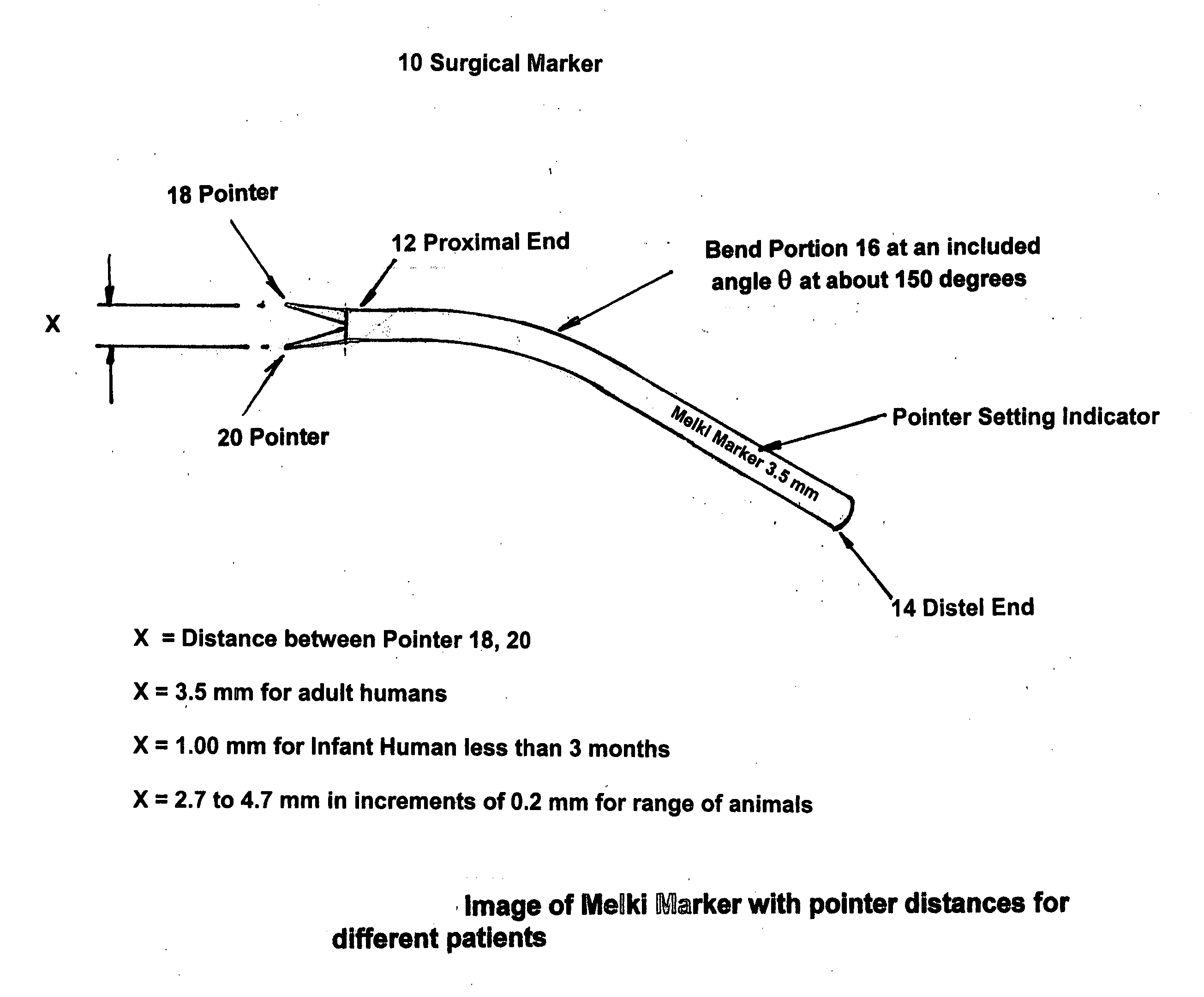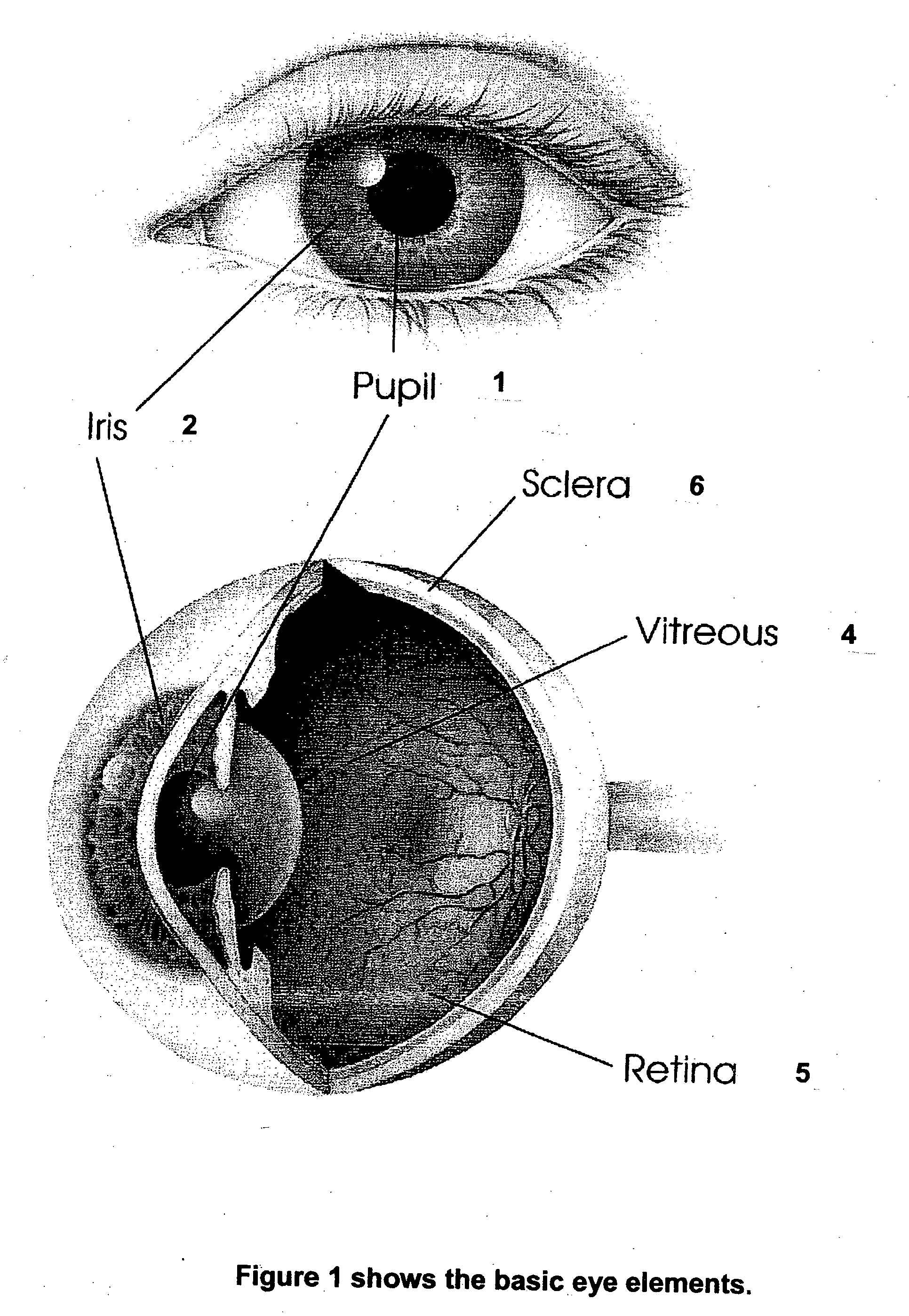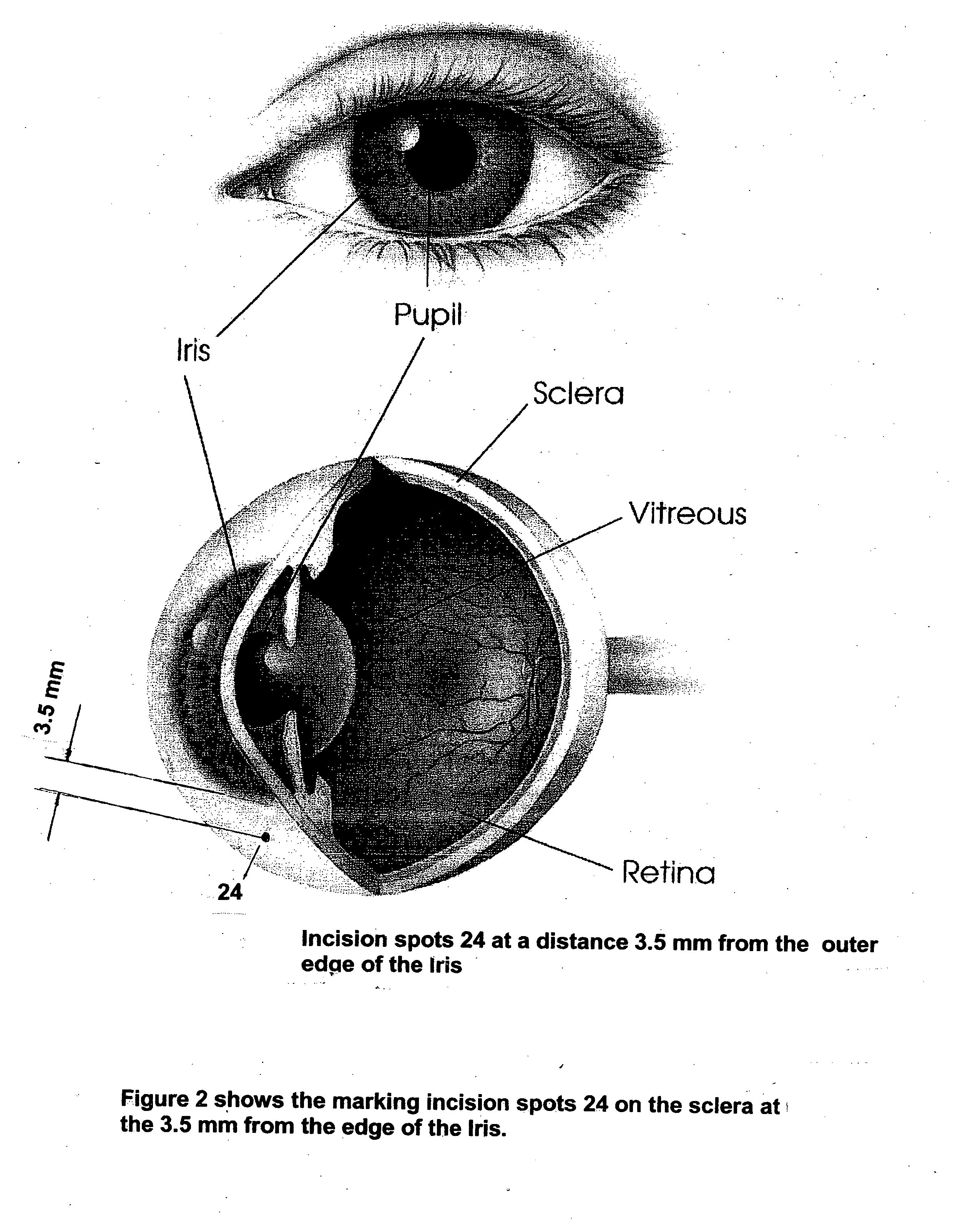Ophthalmic marker for surgical retinal vitreous
a retinal vitreous and ophthalmology technology, applied in the field of ophthalmology, can solve the problems of affecting the efficiency of the operation, and wasting the time of the operating surgeon, so as to save the time and reduce the time of the operation
- Summary
- Abstract
- Description
- Claims
- Application Information
AI Technical Summary
Benefits of technology
Problems solved by technology
Method used
Image
Examples
Embodiment Construction
[0041] The object of the present invention is therefore to provide a marker for ophthalmic surgical procedures which permits the operating physician to effect a precise marking of the location to be operated upon with accuracy, safety and a reduction in the surgeon's operating time.
[0042] For such procedures, the Melki Marker is held by the surgeon in one hand and brought into contact with the sclera limbal tissue of the eye by means of the operating physician taking hold of a tubular marker at the distel handle end and presenting the two sharp marker pointers at the proximal end so that two dots may be made on the scleral surface at for example, 3.5 mm apart and in a manner that uses the edge of the iris, also known as limbus, as reference point and ensures that the Pars Plana safety region is maintained. The novel feature of the ‘Melki Marker’ is that by having a fixed distance between the marker points it is ensured that incision spots 24 made by the pointers are always 3.5 mm a...
PUM
 Login to View More
Login to View More Abstract
Description
Claims
Application Information
 Login to View More
Login to View More - R&D
- Intellectual Property
- Life Sciences
- Materials
- Tech Scout
- Unparalleled Data Quality
- Higher Quality Content
- 60% Fewer Hallucinations
Browse by: Latest US Patents, China's latest patents, Technical Efficacy Thesaurus, Application Domain, Technology Topic, Popular Technical Reports.
© 2025 PatSnap. All rights reserved.Legal|Privacy policy|Modern Slavery Act Transparency Statement|Sitemap|About US| Contact US: help@patsnap.com



